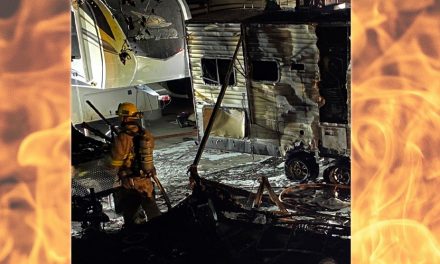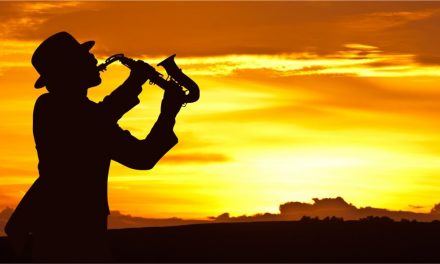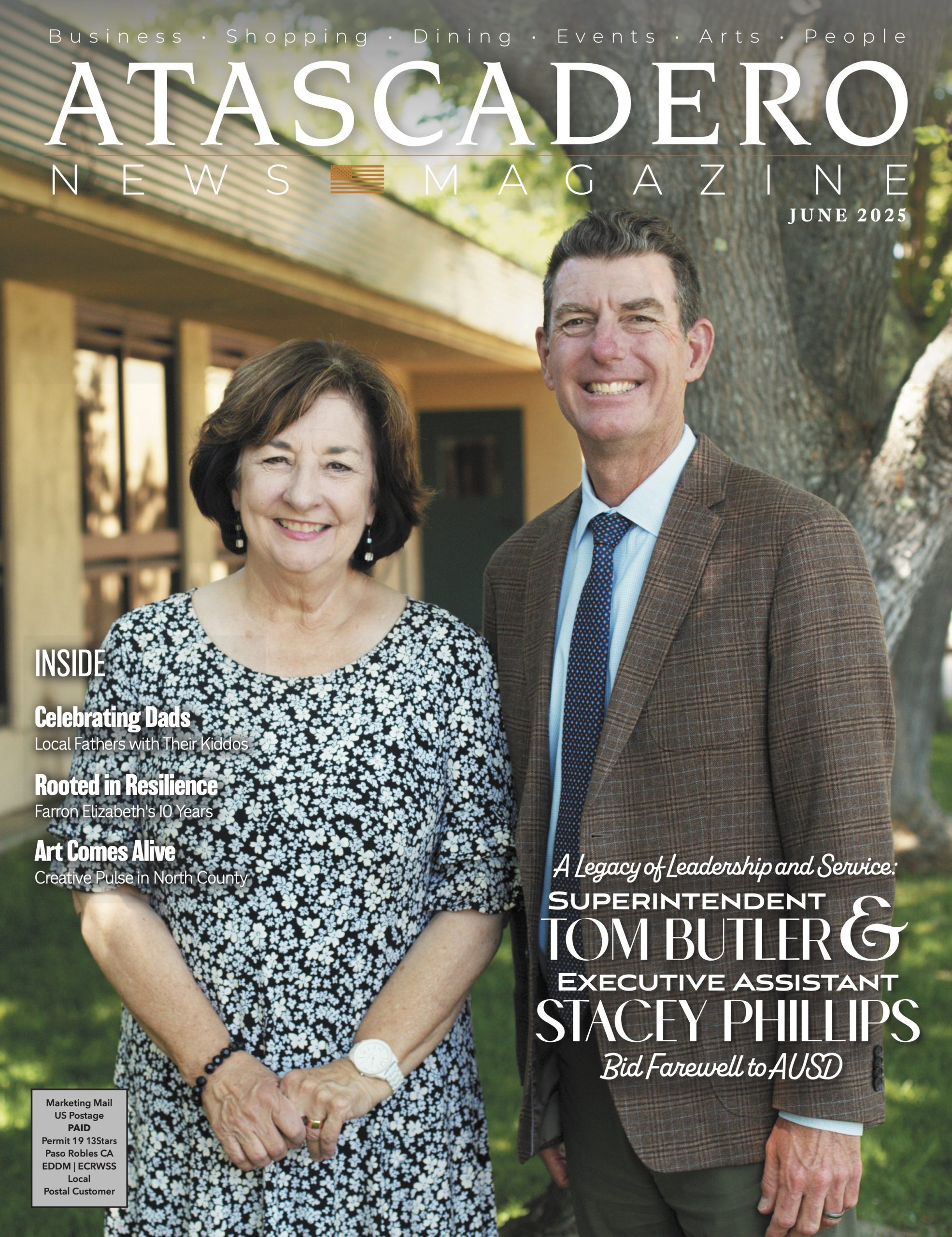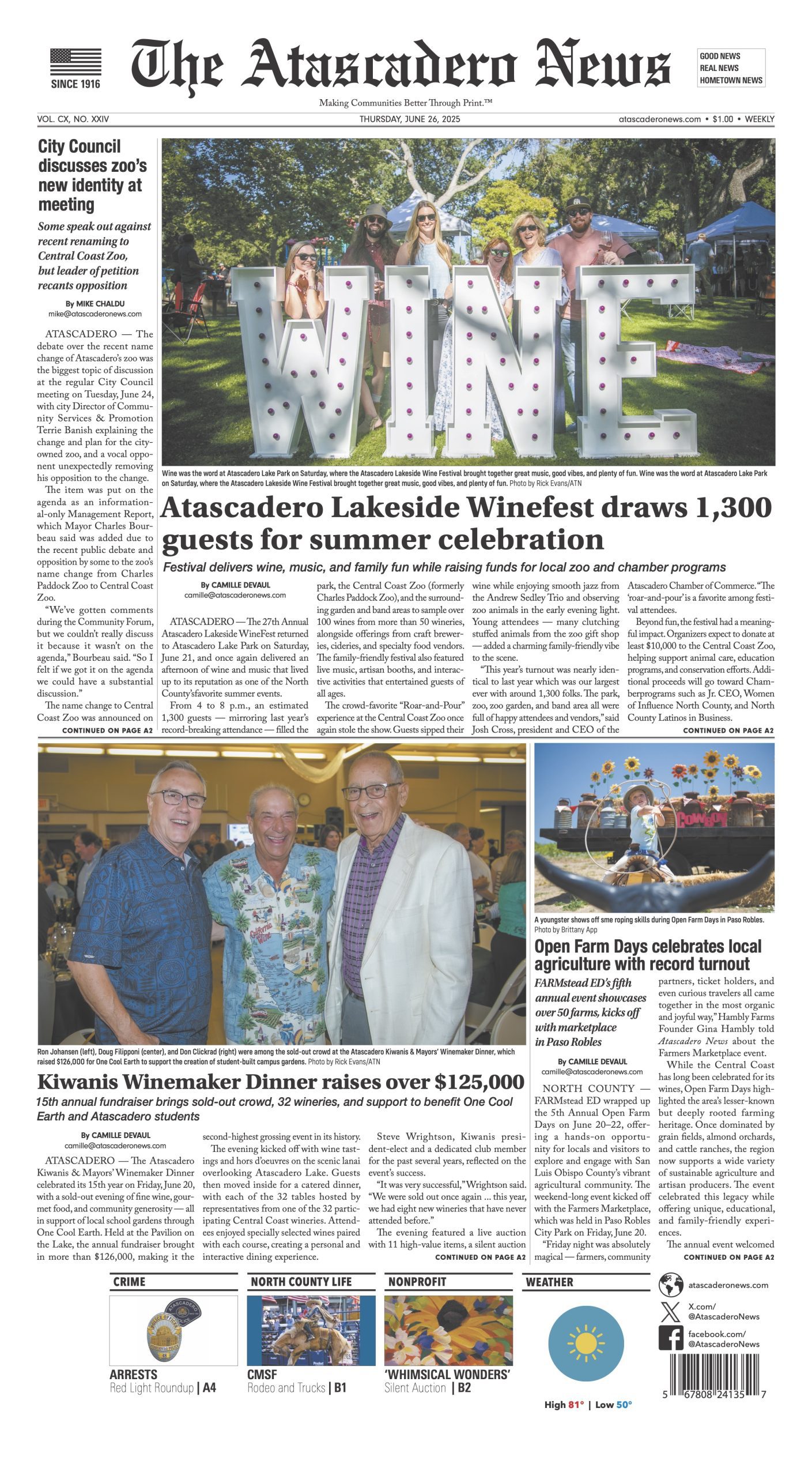By Members of the Atascadero Historical Society
When E.G. Lewis bought the Atascadero Rancho from Jason Henry in 1913, there were two principal residences, the original Henry House, which still is occupied at the north end of the ranch, and a new house that had recently been completed on what is now the corner of Morro Road and El Camino Real. The rest of the ranch consisted of some outbuildings, storage sheds and bunkhouses on 23,000 acres of open ranch land. After the formal ceremony on July 4, 1913, when Mable Lewis accepted the deed for the property from Mr. Henry, E.G. and Mable settled into the newer residence, that would be known as Headquarters House. It was a grand house.
A City Full of Parks
For the rest of 1913, and into 1914, E.G and his team of experts, known as Commissioners, started in earnest to plan for the development of this area. He ended up with grand plans for a modern and complete Civic Center, a major Industrial Center, a new railroad station, complete residential neighborhoods and thousands of acres of fruit orchards. He and his team of experts determined that between four and five thousand acres of the new colony would be used for various parks and recreation areas. A significant portion of these designated parklands were along the several creek beds that traversed the area. Additionally, there were parks identified around some of the significant proposed structures that were planned and laid out as part of the master plan for the development. One of these major parks, Hotel Park, was planned around the site of the proposed hotel, in the area of the current Bank of America, and another, Resident Park, around the site of the Permanent Residences Apartments, near where the Atascadero hospital building now stands.
A Central Meeting Place
Between these two developments there was an area that contained a natural amphitheater, or stadium, with easy access to the Civic Center. In the Atascadero Bulletin #4, February 1914, there is a photograph with the caption: “Entrance to Little Pine Park.” This is believed to be the entrance to what we now call Stadium Park. Later in Bulletin #7, September 1915, these parks are clearly identified on the map of the area. Additionally, there is Administration Park, located just west of the Civic Center buildings identified on this same map.
Beginning in early 1915, the planning for a second convention for potential buyers was begun. This convention was the beginning of the effort to formally start selling lots in the residential sections of Atascadero. As part of this planning, it was determined that a site for general meetings and social events was needed. The perfect location for this site was Little Pine Park. It was close to the civic center, that was under development, but even closer to the planned location for the new tent city that was to be built. Next month’s column will focus on the tent city aspect of this convention.
E.G. Lewis recognized that the attendees to this new convention, who would become the first residents of Atascadero, needed a place to meet, relax, play games, maybe have a dance, or eat a communal lunch, and have a church service. Where did such a centralized place with a natural amphitheater and shade exist within the rancho? Little Pine Park, a piece of ground between his hotel and permanent residents’ apartments, that was protected, had trees and a very calming environment, was the ideal location. The initial effort in the development of what would be renamed Stadium Park, was to first build a road for easy access to the site. Next his crews would build a large platform, or stage, around a large oak tree in a meadow just up from the entrance to this Stadium Park. His crews then terraced the adjoining hillsides and installed bench seating. Electric lights were also installed to provide lighting for functions in the evening and at night. It was a very calming and peaceful environment. Close to everything, but far enough away so there were no sounds of the construction going on to disturb the serenity.
Stadium Park’s Heyday
From the beginning, Stadium Park was a major success. It quickly became the social center of the new community. Visitors, would have lunch served there on nice days. In the evenings there would be concerts, poetry readings and dances and other social events. A society of women was created. The first formal church services were held on this stage, open to all who wanted to attend. In fact, the attendees to these services eventually formed the Federated Church, which continued to meet here for many years after this first service. This church still thrives in Atascadero. In her publication “The Birth of Atascadero,” Marguerite Travis, who arrived in Atascadero in 1915, has many remembrances and anecdotes of specific events taking place in this park naming the actual people who were involved. It is a very interesting reading.
Stadium Park continued to be the social center of Atascadero long after the tents were put away and hundreds of homes were built and thousands of residents had begun new lives in Atascadero. There were weddings, both large and small, dances and many other social events.
Sold Off and Reclaimed
After E.G. Lewis was forced into bankruptcy in 1924, the use of Stadium Park started to diminish. In 1922, the Community Building was completed, the focus of a later article, and it had replaced Stadium Park as the social and religious center of the community, plus it was available year around and included a swimming pool. In 1926 the stage around the giant oak tree was moved to Atascadero Lake where it became the foundation of the original lakeside pavilion.
Eventually, Stadium Park was sold to a series of private buyers, it remained as private property until the 1990s when the City of Atascadero, using a combination of grants and private donations bought the property and restored it back as a public park. Today it is full of hiking trails and some of the most impressive views of the Civic Center available anywhere. If you decide to take a walk in this beautiful park, when you get to the sign for the Marj Mackey Memorial Meadow, stop for a moment and look around and try to visualize a large oak tree, which fell in the 1980s, in the middle with a large wooden stage containing singers performing for a large audience sitting in stands built into the hills. It was an amazing place, and by all accounts it had remarkable acoustics.












